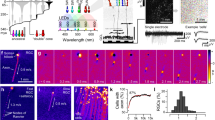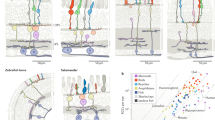Abstract
I HAVE read Sir John Parsons' article in NATURE of Jan. 21 and the letters of Mr. Smith and Sir John (NATURE, Feb. 18) with great interest. Perhaps I may be allowed to make a few comments on them. Sir John's supposition was that since the retinal sensation curve reaches its maximum not far from that of the energy curve, and since the two curves are not unlike in shape, there may have been some evolutionary process at work. Mr. Smith's criticism is that only on a wave-length basis would this be the case. If, as is preferable, frequencies be taken, then the shapes of the two curves are quite different.
This is a preview of subscription content, access via your institution
Access options
Subscribe to this journal
Receive 51 print issues and online access
$199.00 per year
only $3.90 per issue
Buy this article
- Purchase on Springer Link
- Instant access to full article PDF
Prices may be subject to local taxes which are calculated during checkout
Similar content being viewed by others
Rights and permissions
About this article
Cite this article
HARTRIDGE, H. Light and Sight. Nature 121, 617–618 (1928). https://doi.org/10.1038/121617b0
Issue Date:
DOI: https://doi.org/10.1038/121617b0
Comments
By submitting a comment you agree to abide by our Terms and Community Guidelines. If you find something abusive or that does not comply with our terms or guidelines please flag it as inappropriate.



